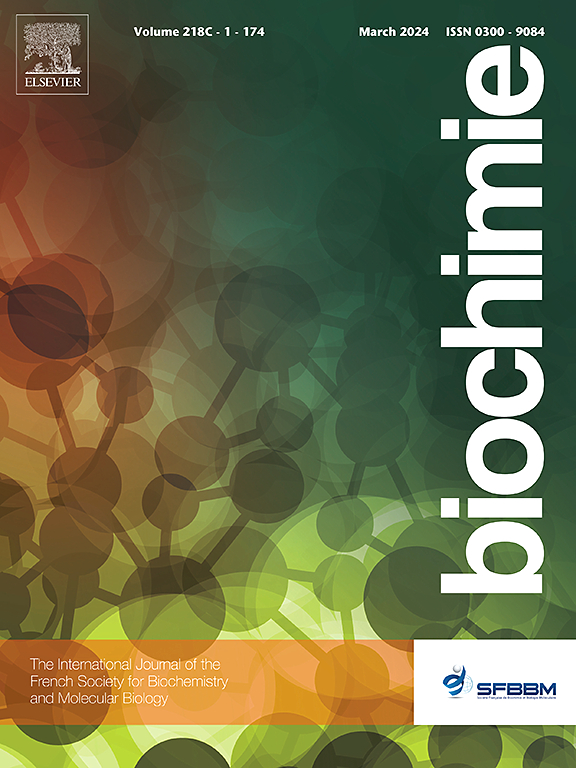Structure and function analysis of microcystin transport protein MlrD
IF 3
3区 生物学
Q2 BIOCHEMISTRY & MOLECULAR BIOLOGY
引用次数: 0
Abstract
Microorganisms play a crucial role in the degradation of microcystins (MCs), with most MC-degrading bacteria utilizing the mlr gene cluster (mlrABCD) mechanism. While previous studies have advanced our understanding of the structure, function, and degradation mechanisms of MlrA, MlrB, and MlrC, research on MlrD remains limited. Consequently, the molecular structure and specific catalytic processes of MlrD are still unclear. This study investigates MlrD from Sphingopyxis sp. USTB-05, utilizing bioinformatics tools for analysis and prediction, conducting homology analysis, and constructing the molecular structure of MlrD. Bioinformatics analysis suggests that MlrD is an alkaline, hydrophobic protein with good thermal stability and is likely located in the cell membrane as a membrane protein without a signal peptide. Homology analysis indicates that MlrD belongs to the PTR2 protein family and contains a PTR2 domain. Phylogenetic analysis reveals that MlrD follows both vertical and horizontal genetic transfer patterns during evolution. Homology modeling demonstrates that the three-dimensional structure of MlrD is primarily composed of 12 α-helices, with conserved residues between the N-terminal and C-terminal domains forming a large reaction cavity. This research broadens current knowledge of MC biodegradation and offers a promising foundation for future studies.
微囊藻毒素转运蛋白MlrD的结构与功能分析。
微生物在微囊藻毒素(MCs)的降解中起着至关重要的作用,大多数降解MCs的细菌利用mlr基因簇(mlrABCD)机制。虽然先前的研究已经提高了我们对MlrA、MlrB和MlrC的结构、功能和降解机制的理解,但对MlrD的研究仍然有限。因此,mrd的分子结构和具体的催化过程尚不清楚。本研究以Sphingopyxis sp. USTB-05中的MlrD为研究对象,利用生物信息学工具对其进行分析和预测,并进行同源性分析,构建MlrD的分子结构。生物信息学分析表明,MlrD是一种碱性疏水蛋白,具有良好的热稳定性,可能作为一种不含信号肽的膜蛋白存在于细胞膜上。同源性分析表明,MlrD属于PTR2蛋白家族,含有PTR2结构域。系统发育分析表明,mrd在进化过程中遵循垂直和水平遗传转移模式。同源性建模表明,MlrD的三维结构主要由12个α-螺旋组成,n端和c端结构域之间的保守残基形成了一个大的反应腔。该研究拓宽了目前对MC生物降解的认识,为今后的研究奠定了良好的基础。
本文章由计算机程序翻译,如有差异,请以英文原文为准。
求助全文
约1分钟内获得全文
求助全文
来源期刊

Biochimie
生物-生化与分子生物学
CiteScore
7.20
自引率
2.60%
发文量
219
审稿时长
40 days
期刊介绍:
Biochimie publishes original research articles, short communications, review articles, graphical reviews, mini-reviews, and hypotheses in the broad areas of biology, including biochemistry, enzymology, molecular and cell biology, metabolic regulation, genetics, immunology, microbiology, structural biology, genomics, proteomics, and molecular mechanisms of disease. Biochimie publishes exclusively in English.
Articles are subject to peer review, and must satisfy the requirements of originality, high scientific integrity and general interest to a broad range of readers. Submissions that are judged to be of sound scientific and technical quality but do not fully satisfy the requirements for publication in Biochimie may benefit from a transfer service to a more suitable journal within the same subject area.
 求助内容:
求助内容: 应助结果提醒方式:
应助结果提醒方式:


